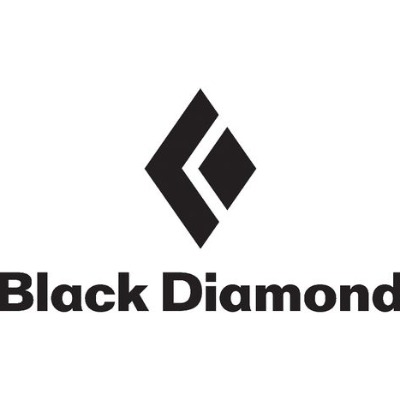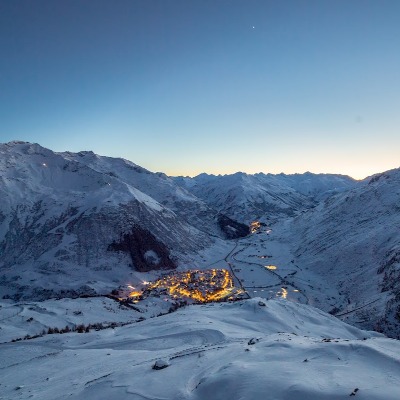Mount Hutt Chooses Kassbohrer On The Road To Carbon Neutrality By 2030

Mount Hutt in Canterbury is renowned for its unique pyramidal shape and expansive 365 hectares of skiable terrain. As part of NZSki Ltd, which also manages the resorts Coronet Peak and The Remarkables, Mount Hutt offers a diverse range of slopes, including challenging double black diamonds and modern snow parks. With over 300 employees, including four professional slope teams and ten dedicated snow groomer operators working in two shifts, Mount Hutt is a major player in the New Zealand ski industry. The stunning views, including the Pacific Ocean to the east and the snow-capped Alps to the west, enhance the extraordinary experience. With a long ski season from June to October and around four to five meters of snow annually, it’s a prime destination for domestic skiers seeking less crowded, well-groomed trails.
To improve operations and sustainability, Mount Hutt uses four PistenBully 600 snow groomers, including models with winches for steep terrain and others for terrain parks. SNOWsat is used for fleet management and to accurately measure and plan snow depths. In 2024, a PRO ACADEMY training course was held for the first time to improve the skills of the operators.
The ski resort aims to become carbon neutral by 2030. Mount Hutt sees great opportunities for the future in the use of the diesel-electric PistenBully 600 E+ and the use of HVO Diesel, underlining its commitment to providing an excellent guest experience and protecting the environment.
Case study Mount Hutt
- PistenBully in use since 1974
- SNOWsat in use since 2018
- PRO ACADEMY trainings since 2024
The following SNOWsat solutions are used:
- SNOWsat Fleet
- Fleet management for all vehicles
- SNOWsat Snow Depth Measurement
- High precision snow depth measurement
- SNOWsat GIS
- Simple and flexible management of geodata
"Our relationship with Kässbohrer and its dealer is very special and has been a cornerstone of our business for the last 15–20 years. Kässbohrer's commitment to service and after sales support has been remarkable. This level of engagement has really strengthened our partnership." – James McKenzie
- High quality operations and minimal downtime"Kässbohrer's ongoing support and responsiveness to any issues, combined with the expertise of our own mechanics and the support of SNOWsat, has been instrumental in maintaining high quality operations and minimal downtime." – James McKenzie
- Durability and efficiency with the PistenBully 600 "The PistenBully 600 models are essential to our operations due to their durability and efficiency. " – James McKenzie
- 20% less emissions with the PistenBully 600 E+ "We observed around a 20% improvement in fuel efficiency compared to other machines, which aligns with our goal to reduce emissions and achieve carbon neutrality by 2030." – James McKenzie
- Operating a ski resort with nominal natural snowfall "SNOWsat has also given us the ability to operate, manage and run a ski resort with very nominal natural snowfalls." – James McKenzie
- Open slopes more quickly SNOWsat has significantly reduced the time we spend on manual snow measurements and has allowed us to open slopes more quickly." – James McKenzie
- Providing a long-lasting snow cover "SNOWsat ensures that we get a good consistency of cover throughout the winter. That's been a real game changer for us. " – James McKenzie
- Avoid problematic areas and plan slope operations with independent geodata management "By integrating winch anchor points, isolation valves, and snowmaking infrastructure into our GIS Manager, we can create a more accurate and comprehensive model of our mountain operations. This added layer of information helps us avoid problematic areas and efficiently plan our snowmaking and grooming strategies." – James McKenzie
- New employees find their way around more quickly thanks to a solid geodatabase "The GIS Manager has improved the efficiency for new operators. With the detailed geodata available, they can easily identify and navigate trails by name." – James McKenzie
- Optimizing working patterns with PRO ACADEMY training "The trainer’s independent review was invaluable, providing confirmation that we are on the right track while also highlighting areas for improvement." – James McKenzie
Valuable insights and recommendations from experts "The PRO ACADEMY trainer worked directly with our team, offering valuable insights and recommendations." – James McKenzie
We had the pleasure of interviewing James McKenzie, who has been Ski Area Manager at Mount Hutt since 2007. He is responsible for all operations in the ski area and all guest services such as slope grooming, snow sports, ski schools, rentals and access the bottom of the mountain to the top.
Kässbohrer: Please tell us a few things about the ski resort Mount Hutt and what makes your resort special?
James McKenzie: Mount Hutt is quite unique due to its nearly pyramidal mountain shape. Despite having only three chairlifts, our main lift takes guests to the summit, from where they can ski in any direction, offering approximately 365 hectares of skiable terrain. We offer extensive slopes and a modern snow park that caters to both beginners and advanced skiers. Moreover, we have hundreds of hectares of advanced and extreme terrain, including double black diamonds and deep chutes. The scenic views are spectacular, with the Pacific Ocean visible about 50–60 kilometers to the east and the snow-capped Alps to the west.
Our ski season is one of the longest in New Zealand and the Southern Hemisphere, running from June through October. We typically receive around four to five meters of snow annually, depending on the year.
We cater mainly to domestic guests, providing great value for families and loyal customers who appreciate our spacious, well-groomed trails and less congestion compared to other resorts.
Kässbohrer: Which challenges do you face when preparing and grooming the slopes?
James McKenzie: Our primary challenge in slope preparation involves managing the extreme weather conditions, such as high winds reaching 250 kilometers per hour and heavy snowfall, which can occasionally cause road closures and force us to cancel shifts. At the same time, we have to deal with minimal natural snowfall in some seasons, which requires an extremely good and experienced team of operators.
Kässbohrer: Tell us about the relationship between Mount Hutt and Kässbohrer. What’s unique about it?
James McKenzie: Our relationship with Kässbohrer is very special and has been a cornerstone of our business for the last 15–20 years. We have a supply contract with Kässbohrer, facilitated by our New Zealand agent, which has worked exceptionally well. Kässbohrer's commitment to service and after sales support has been remarkable. This year, for the first time, we had a PRO ACADEMY trainer visit New Zealand to provide invaluable on-site training and support to our team. This level of personal commitment has really strengthened our partnership.
In addition, our staff have had the opportunity to visit the Kässbohrer factory in Germany, further enhancing our relationship. Kässbohrer's ongoing support and responsiveness to any issues, combined with the expertise of our own mechanics and the support of SNOWsat, has been instrumental in maintaining high quality operations and minimal downtime.
Kässbohrer: Your whole fleet consists of PistenBully 600. In 2023 you had a demonstration with the PistenBully 600 E+. What was your experience with it, and why do you rely on those machines?
James McKenzie: We were very impressed with the PistenBully 600 E+ during the demonstration. Although we did not purchase it this year due to our equipment replacement schedule, we are very keen on integrating it into our fleet in the future. We observed around a 20% improvement in fuel efficiency compared to other machines, which aligns with our goal to reduce emissions and achieve carbon neutrality by 2030.
The PistenBully 600 models are essential to our operations due to their durability and efficiency. We also find that using HVO fuel, which is compatible with these models, plays a crucial role in our sustainability efforts. We have not used HVO diesel yet as it is currently not available. But we expect this option to be available in New Zealand soon and we need to move to it to achieve our goal of carbon neutrality by 2030. This combination of advanced technology and eco-friendly practices will help us to maintain high standards while working towards our environmental goals.
Kässbohrer: Efficiency and technology are becoming increasingly important in our industry. How does Mount Hutt utilize SNOWsat in its daily grooming operations? Can you provide an example of how SNOWsat has positively impacted your operations?
James McKenzie: SNOWsat is used daily for our grooming operations. It provides us with critical data that helps us plan and execute our snow management effectively. For example, the technology helps us in evenly spreading snow piles created by snow guns and in planning snow distribution accurately. In addition it ensures that we get a good consistency of cover throughout the winter. That's been a real game changer for us. SNOWsat has also significantly reduced the time we spend on manual snow measurements and has allowed us to open slopes more quickly. It has given us the ability to operate, manage and run a ski resort with very nominal natural snowfalls.
In addition to this, we have recently installed SNOWsat LiDAR in a snow groomer. We definitely see great potential here in identifying snow drifts more precisely and pushing them onto the trails more effectively. Also planning around widening trails or bringing snow from a road or elsewhere into the right area. As we have only been testing it for a short time, we are not able to give detailed results yet.
Kässbohrer: Could you please explain which benefit you have with the independent adaptation of your geodata in the GIS Manager?
James McKenzie: The ability to independently adapt our geodata in the GIS Manager has been incredibly beneficial for us. By integrating detailed data into our GIS Manager, such as the locations of winch anchor points, isolation valves, and snowmaking infrastructure, we can create a more accurate and comprehensive model of our mountain operations. This added layer of information helps us avoid problematic areas and efficiently plan our snowmaking and grooming strategies.
The GIS Manager has also improved the efficiency for our operators, particularly those who are new to the mountain or coming from Europe. With the detailed geodata available, they can easily identify and navigate trails by name, which significantly reduces the learning curve and improves operational efficiency. Overall, having better, more detailed data has made a substantial difference in how we plan and execute our daily tasks.
Kässbohrer: Training plays a crucial role in the ski industry. Can you explain how you train your staff? Has Mt Hutt benefited from the recent Kässbohrer PRO ACADEMY training for your operators?
James McKenzie: Training is vital to ensure that our staff can deliver the highest quality of slope grooming. We have historically used a rookie program to develop new operators from the ground up, but we’re now re-evaluating our approach due to challenges in retaining skilled staff. We are considering end-of-season training camps to help identify rookies and increase productivity at the start of the following season.
This year, we introduced PRO ACADEMY trainings, bringing a Kässbohrer trainer to New Zealand for the first time. The trainer worked directly with our team, offering valuable insights and recommendations. We learned that some of our operators needed to adjust their techniques, such as using the blade more effectively rather than relying too much on the tiller. The trainer’s independent review was invaluable, providing confirmation that we are on the right track while also highlighting areas for improvement.
Kässbohrer: Many thanks for your insights, James. Have a great season!













